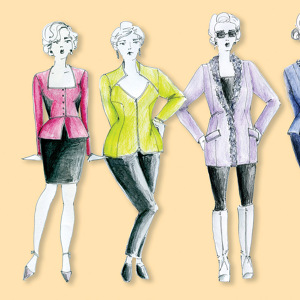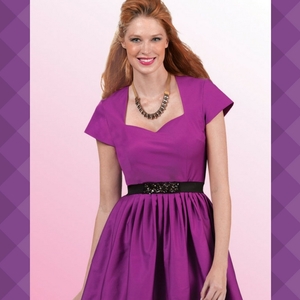A Formula for Perfect Pleats
Ingenious ways to calculate yardage and folds
My husband and I love rock-and-roll dancing, a style of dance related to the Lindy Hop or swing. That means I need lots of full, swishy skirts with perfect pleats, and I like to make them myself. I’ve often found a piece of fabric that would be perfect for a pleated skirt and wanted to make use of the entire length for maximum twirl potential.
With the help of my math-whiz spouse, I worked out a formula that tells me what knife-pleat width and spacing I need in order to use every inch of fabric. The formula gives me the numbers, and I make a template to use for marking the pleats on my fabric.
For box or inverted pleats, I’ll show you a different formula: In this case, you decide how many pleats you want in your skirt, and the formula tells you how much fabric you need. Again, you’ll make a template as a guide for marking the pleat foldlines. Both processes are easy, especially if you work in metric units rather than inches. Grab your calculator and a pencil—you’re just steps away from a party-ready dress or skirt.
Factors to consider
A number of considerations come into play when you’re making pleats, including the size of the base garment, the amount of fabric available, and the style of pleat. Think these through before starting. First, choose a pleat type, then do the math.
Pleat types
Knife pleats generally all face the same direction around a garment. Box and inverted pleats consist of two knife pleats. In a box pleat, they face away from each other; in an inverted pleat they face toward each other, with their folded edges meeting. An inverted pleat is, essentially, a box pleat from the wrong side.
…
Start your 14-day FREE trial to access this story.
Start your FREE trial today and get instant access to this article plus access to all Threads Insider content.
Start Your Free TrialAlready an Insider? Log in

































Log in or become a member to post a comment.
Sign up Log in